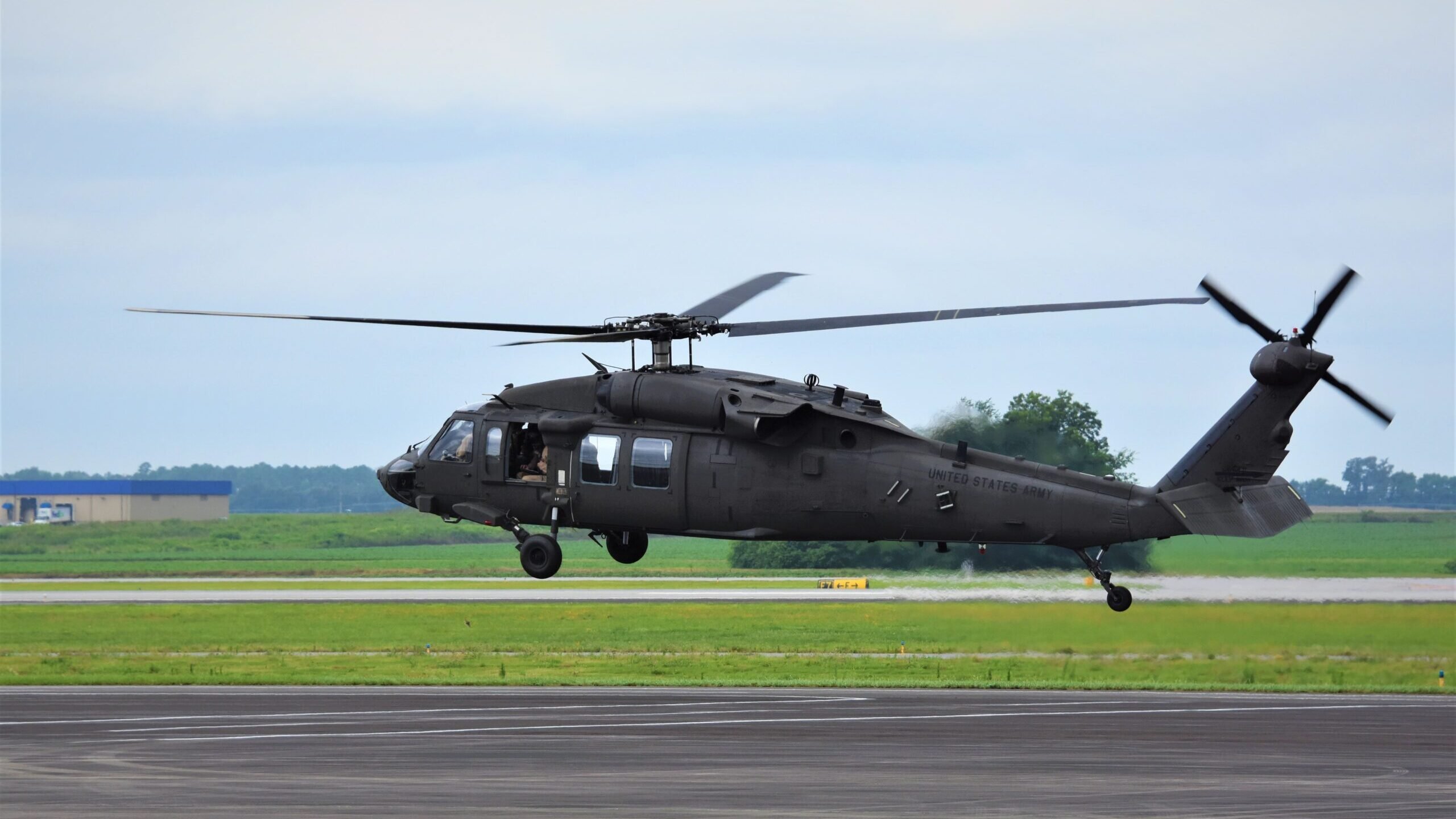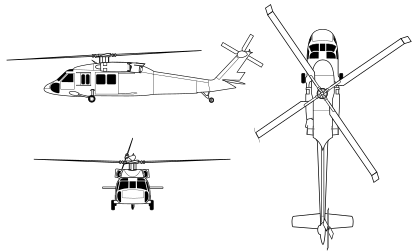Background and Growth of the UH 60 Black Hawk Helicopter
Background and Growth of the UH 60 Black Hawk Helicopter
Blog Article
Checking Out the Innovative Modern Technology Behind Airplane Style and Engineering
The area of aircraft style and engineering is observing a transformative change driven by ingenious technologies that boost sustainability, effectiveness, and performance. Advanced materials such as carbon fiber compounds and titanium alloys are establishing brand-new requirements, while wind resistant advancements and expert system are enhancing processes and boosting results. As the market comes to grips with the obstacles of environmental duty, advancements in lasting air travel technologies guarantee to reshape the future. Nevertheless, the implications of these improvements prolong beyond efficiency metrics; they may redefine the very nature of flight. What might this imply for the market as a whole?
Advanced Products in Airplane Design
Exactly how can the integration of sophisticated products change aircraft design? The incorporation of sophisticated products, such as carbon fiber composites, titanium alloys, and progressed porcelains, plays a vital role in enhancing aircraft performance and effectiveness. These materials use superior strength-to-weight ratios, enabling makers to reduce overall aircraft weight without endangering architectural stability. This decrease in weight straight adds to enhanced fuel efficiency and boosted payload capability.
Furthermore, innovative products exhibit enhanced resistance to corrosion and fatigue, resulting in lower maintenance costs and extended life span. The use of titanium in important parts aids endure extreme temperature levels and anxieties, while carbon fiber composites provide adaptability in layout and manufacturing processes. This flexibility enables even more aerodynamic shapes, adding to remarkable efficiency features.
Additionally, the combination of wise materials, which can change homes in response to exterior stimuli, opens up new methods for flexible systems in aircraft style. uh 60. These developments guarantee not just to enhance safety and functional effectiveness but likewise to add to sustainability efforts by decreasing environmental impact via reduced emissions. In recap, progressed products are redefining the landscape of aircraft design, leading the way for extra effective, durable, and eco-friendly aeronautics services
Wind Resistant Advancements for Performance
Aerodynamic advancements play a critical duty in enhancing aircraft efficiency, considerably influencing gas consumption and total efficiency. Developments in airfoil style, such as the introduction of supercritical wings, permit enhanced lift-to-drag ratios, lowering drag at transonic rates. These developments make it possible for aircraft to keep higher rates with lower fuel expense, straight impacting functional expenses and environmental sustainability.
In addition, the combination of winglets has actually confirmed efficient in alleviating vortex-induced drag at the tips of wings, additionally boosting fuel effectiveness - uh 60. This layout modification results in a decrease in wake disturbance, adding to boosted aerodynamic performance throughout cruise problems

Additionally, computational liquid dynamics (CFD) devices have actually changed the screening and refinement of wind resistant forms, permitting accurate simulations of air flow around aircraft (uh 60). This allows designers to innovate continuously, guaranteeing that modern aircraft not just satisfy governing requirements however additionally push the borders of effectiveness in aviation

Role of Computer System Simulations
Computer simulations have actually become an indispensable device in the area of aircraft layout, enabling engineers to perform comprehensive evaluations and optimizations of various style aspects. These simulations enable the online screening of wind resistant homes, architectural integrity, and performance metrics long prior to physical models are built. By utilizing computational liquid dynamics (CFD) and limited aspect evaluation (FEA), engineers can predict exactly how air streams around the airplane and how different products will certainly react to tension and stress.
Additionally, computer system simulations facilitate the exploration of a broad variety of variables and scenarios, speeding up the style procedure and lowering costs connected with physical testing. This ability not just boosts the precision of predictions regarding aircraft habits however likewise uses understandings right into possible design improvements that might not be right away evident with standard approaches.

In addition, simulations aid ensure compliance with stringent safety regulations by allowing designers to determine and fix possible concerns early in the layout stage. The integration of simulation innovations right into the airplane style process underscores the substantial innovations in engineering practices, ultimately contributing to the advancement of much safer, a lot more effective, and eco friendly aircraft.
Expert System in Design
Synthetic knowledge (AI) is reinventing the engineering landscape, especially in airplane design, by improving decision-making procedures and maximizing layout workflows. With equipment knowing formulas, AI can evaluate huge datasets, revealing patterns and insights that inform style options and boost total efficiency.
AI applications in aircraft style include generative style, where algorithms produce numerous layout choices based on specified parameters, enabling engineers to examine a more comprehensive series of opportunities. This not just speeds up the layout stage but likewise makes certain that the end products meet stringent performance and safety criteria.
Furthermore, AI-driven predictive analytics help with upkeep organizing by evaluating historical information and predicting prospective failures. This positive approach decreases downtime and enhances aircraft reliability.
Additionally, AI help in simulation and modeling, making it possible for designers to check styles under various conditions without the requirement for physical prototypes. This ability reduces development timelines and lessens prices connected with traditional testing methods.
Sustainable Aeronautics Technologies
The answer exists in the adoption of lasting aviation modern technologies that focus on efficiency and see this page reduce carbon exhausts. Developments such as lasting aviation gas (SAFs), which are derived from sustainable resources, have actually emerged as an essential component in achieving reduced lifecycle discharges.
Moreover, innovations in aircraft style, such as the development of lighter materials and even more aerodynamically efficient forms, add to enhanced gas efficiency. Electric and hybrid propulsion systems are additionally getting grip, providing a path to reduce reliance on nonrenewable fuel sources and minimize greenhouse gas discharges.
The assimilation of these technologies is supported by governing frameworks and industry partnerships targeted at establishing enthusiastic sustainability targets. Additionally, digital devices like information analytics and synthetic intelligence can maximize trip operations, even more improving gas performance. By accepting lasting practices and innovations, the air travel market can not only fulfill the expanding demand for flight however likewise play an essential duty in resolving environment change, guaranteeing a much more lasting future for air transport.
Conclusion
The merging of innovative materials, aerodynamic technologies, and innovative innovations notes a significant development in airplane design and design. The assimilation of carbon fiber composites, titanium alloys, and AI-driven processes not just enhances performance and performance yet also enhances operations and predictive maintenance.

Computer simulations have ended up being an indispensable tool in the field of airplane design, enabling engineers to carry out in-depth evaluations and optimizations of numerous layout facets.The convergence of advanced materials, aerodynamic developments, and innovative modern technologies notes a substantial evolution in airplane layout and design.
Report this page